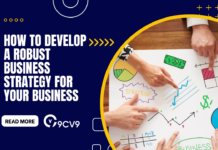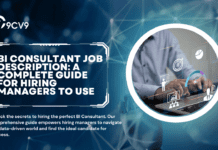Key Takeaways
- Quick strategies like microlearning and peer-to-peer sharing can significantly boost employee expertise in less time.
- Cross-training and just-in-time learning ensure skill flexibility and immediate knowledge application.
- Internal expert sessions and sustained learning initiatives drive continuous growth and workforce excellence.
In today’s fast-evolving business landscape, an organization’s ability to remain competitive and future-ready depends largely on the strength and adaptability of its workforce. While hiring top talent is important, retaining and continuously developing your existing team is far more sustainable and cost-effective. Deepening your employees’ expertise not only drives better performance and innovation but also enhances job satisfaction, engagement, and retention rates—critical factors in the modern workplace.

Companies across industries are rapidly realizing that employee development must be agile, continuous, and directly aligned with organizational goals. Traditional methods of upskilling—such as long training seminars or annual workshops—are no longer sufficient in an age where knowledge becomes outdated in months, not years. Instead, businesses need fast, flexible, and impactful strategies that empower their teams to acquire deeper knowledge and sharpen their skills in real time.
This is where quick, targeted initiatives can make a transformative difference. Whether it’s through on-the-job learning, peer-to-peer knowledge sharing, microlearning modules, or expert-led sessions, there are several efficient ways to equip your workforce with the expertise needed to excel in their roles. These methods not only save time but also cater to the modern employee’s preference for flexible and personalized learning opportunities.
Moreover, organizations that prioritize continuous development send a strong message: they value growth, excellence, and internal mobility. This mindset fosters a positive work culture where employees feel encouraged to invest in their own professional journeys—resulting in a high-performing, future-ready team.
In this blog, we’ll explore the top 5 quick ways to deepen your employees’ expertise—strategies that are not only easy to implement but also deliver powerful and lasting results. Whether you’re an HR professional, a team leader, or a business owner, these proven approaches will help you unlock the full potential of your team, improve productivity, and maintain a competitive edge in your industry.
Let’s dive into the smartest, most effective techniques to upskill your workforce—without compromising on time or resources.
Before we venture further into this article, we would like to share who we are and what we do.
About 9cv9
9cv9 is a business tech startup based in Singapore and Asia, with a strong presence all over the world.
With over nine years of startup and business experience, and being highly involved in connecting with thousands of companies and startups, the 9cv9 team has listed some important learning points in this overview of the Top 5 Quick Ways to Deepen Your Employees’ Expertise.
If your company needs recruitment and headhunting services to hire top-quality employees, you can use 9cv9 headhunting and recruitment services to hire top talents and candidates. Find out more here, or send over an email to [email protected].
Or just post 1 free job posting here at 9cv9 Hiring Portal in under 10 minutes.
Top 5 Quick Ways to Deepen Your Employees’ Expertise
- Implement Microlearning Programs
- Encourage Peer-to-Peer Knowledge Sharing
- Offer Cross-Training Opportunities
- Leverage Just-In-Time Learning Resources
- Set Up Internal Expert Sessions or Webinars
1. Implement Microlearning Programs
Microlearning is a modern, agile approach to training that delivers knowledge in short, focused bursts. It allows employees to gain critical skills and knowledge efficiently—without stepping away from their daily responsibilities for long periods. By integrating microlearning into your training strategy, organizations can foster continuous learning, higher retention, and immediate application of skills in the workplace.
1. What is Microlearning?
- A training method that delivers content in bite-sized, easily digestible formats.
- Lessons typically range from 3–10 minutes in length.
- Formats include videos, quizzes, infographics, podcasts, flashcards, and interactive scenarios.
- Designed for mobile, on-the-go consumption and just-in-time learning needs.
2. Why Microlearning Works
- Boosts Knowledge Retention
- Repetition and spaced learning enhance long-term memory.
- Information is easier to recall and apply immediately.
- Fits Into Daily Workflows
- Learners can complete lessons between meetings or during breaks.
- Reduces training downtime and improves efficiency.
- Promotes Continuous Learning
- Encourages a habit of learning through daily or weekly nudges.
- Supports upskilling without overwhelming learners.
3. Benefits of Microlearning for Organizations
| Benefit | Description |
|---|---|
| Faster Skill Acquisition | Employees quickly grasp and apply new concepts in real time. |
| Cost-Effective Delivery | Reduces training overhead and eliminates need for lengthy sessions. |
| Personalized Learning Paths | Tailored modules based on individual roles, gaps, or career goals. |
| Higher Engagement Rates | Short, focused content improves participation and completion. |
| Scalable Across the Organization | Suitable for teams of all sizes and locations. |
4. Microlearning Content Formats (with Examples)
| Format | Description | Example Use Case |
|---|---|---|
| Video Modules | 3–5 minute explainers or tutorials | “How to handle customer objections” (Sales Team) |
| Infographics | Visual summaries of complex topics | “Cybersecurity Best Practices” (IT Team) |
| Interactive Scenarios | Simulated decision-making exercises | “Managing Conflict in the Workplace” (HR Team) |
| Quizzes & Flashcards | Reinforcement through quick assessments | “Product Knowledge Check” (Retail Staff) |
| Podcasts or Audio Clips | Learn while commuting or multitasking | “5-Minute Leadership Tips” (Managers) |
5. Use Cases and Real-World Examples
- Google uses short instructional videos and gamified micro-challenges in its onboarding and skill development programs.
- Unilever launched a microlearning platform called Flex Experiences, enabling employees to learn new skills through short, project-based tasks.
- Walmart trains its frontline employees using microlearning via mobile apps—leading to faster product knowledge uptake and improved customer service.
6. Comparison: Traditional Training vs Microlearning
| Criteria | Traditional Training | Microlearning |
|---|---|---|
| Session Duration | 1–3 hours | 3–10 minutes |
| Knowledge Retention | Moderate | High due to repetition & relevance |
| Training Cost | High | Low to moderate |
| Accessibility | In-person or desktop-based | Mobile-friendly, accessible anywhere |
| Engagement Levels | Moderate | High due to interactive, quick content |
| Scalability | Limited | Easily scalable across teams |
7. Implementation Strategy for Microlearning Programs
A. Identify Key Skill Gaps
- Use performance reviews, feedback, and surveys to determine learning needs.
- Prioritize areas with the highest business impact.
B. Choose a Microlearning Platform
- Popular tools: TalentCards, EdApp, 7taps, LearnAmp, Axonify.
- Ensure the platform supports multimedia content, mobile access, and analytics.
C. Design Targeted Learning Modules
- Break down complex topics into standalone lessons.
- Use real-world examples, scenarios, and storytelling.
D. Promote Daily or Weekly Learning Habits
- Push regular content via email, Slack, or learning management systems.
- Use gamification to encourage consistency and competition.
E. Measure and Optimize
- Track key metrics like completion rate, knowledge retention, and skill application.
- Use data to improve content quality and delivery frequency.
8. Metrics to Track Microlearning Success
| Metric | Definition | Target Outcome |
|---|---|---|
| Completion Rate | % of employees completing each module | >80% |
| Retention Score (Post-Test) | Improvement in test scores after training | 20–30% increase |
| Engagement Rate | Frequency of voluntary training participation | Weekly participation by >60% staff |
| Skill Application Rate | Measured improvement in job performance | Observable within 2–4 weeks |
| Time-to-Competency | Time taken to apply the new knowledge | 30–50% reduction vs traditional methods |
9. Challenges and How to Overcome Them
- Content Overload
- Avoid pushing too many modules at once.
- Focus on quality over quantity.
- Lack of Motivation
- Use leaderboards, badges, or small incentives to drive usage.
- Technology Adoption Resistance
- Ensure training is mobile-friendly, intuitive, and aligned with employee workflows.
10. Future of Microlearning
- Integration with AI to personalize learning paths based on employee behavior.
- Real-time feedback loops using data analytics.
- Voice-driven microlearning and chatbot-based lesson delivery.
Conclusion of the Section
Microlearning offers one of the fastest and most efficient methods for deepening employee expertise without disrupting business operations. Its flexibility, high engagement rate, and measurable outcomes make it ideal for today’s dynamic workplace. By implementing microlearning programs strategically, organizations can empower their teams with actionable knowledge—delivered when and how it’s needed most.
2. Encourage Peer-to-Peer Knowledge Sharing
Peer-to-peer (P2P) knowledge sharing is one of the fastest and most cost-effective methods to accelerate employee development. When employees share expertise, insights, and experiences with each other, it not only deepens their own understanding but also builds collective intelligence across the organization. Unlike top-down training, peer-led knowledge transfer is practical, real-time, and culturally aligned with how modern teams collaborate.
1. What is Peer-to-Peer Knowledge Sharing?
- A learning model where employees exchange expertise directly with colleagues.
- Knowledge is passed informally or through structured initiatives such as mentorship, shadowing, lunch-and-learns, or team debriefs.
- Encourages bidirectional learning and stronger team cohesion.
2. Benefits of Peer-to-Peer Learning
A. Accelerates On-the-Job Learning
- Real-time learning embedded into workflows.
- Ideal for onboarding, cross-training, and domain-specific insights.
B. Improves Retention and Application
- Knowledge gained through peer discussion is often more memorable.
- Immediate relevance increases the likelihood of applying new skills.
C. Encourages Collaborative Culture
- Breaks down knowledge silos between departments or teams.
- Fosters trust, openness, and mentorship.
D. Increases Engagement and Motivation
- Employees feel valued when they share their expertise.
- Encourages proactive learning and recognition.
3. Popular Peer-to-Peer Knowledge Sharing Models
| Method | Description | Ideal Use Case |
|---|---|---|
| Mentorship Programs | One-on-one pairing between senior and junior staff | Career growth, skill development |
| Job Shadowing | Observing a colleague’s daily tasks in real time | Onboarding, role transition |
| Lunch & Learn Sessions | Informal presentations during breaks | Team-wide knowledge exchange |
| Knowledge Circles | Small groups that meet regularly to discuss topics | Ongoing professional development |
| Communities of Practice | Groups formed around shared roles/interests | Continuous learning within functions |
| Internal Wikis or Forums | Platforms for documentation and Q&A | Long-term knowledge preservation and retrieval |
4. Real-World Examples of Successful Peer Knowledge Sharing
- LinkedIn created an internal program called “InDay,” where employees host mini-workshops for each other to showcase expertise.
- Shopify implements “learning guilds” that bring employees from across the organization together to solve challenges and share best practices.
- Atlassian uses “ShipIt Days,” allowing team members to collaborate freely and share new ideas or improvements peer-to-peer.
5. Comparison: Peer-to-Peer Learning vs Traditional Training
| Aspect | Peer-to-Peer Learning | Traditional Training |
|---|---|---|
| Content Relevance | Highly practical and job-specific | Often generic and high-level |
| Cost | Low | Medium to high |
| Scalability | Moderate | High (with proper structure) |
| Engagement | High | Moderate |
| Flexibility | High | Low (fixed schedule and format) |
| Knowledge Retention | Strong (based on shared experience) | Moderate (often theoretical) |
6. Implementation Framework: Peer Knowledge Sharing Strategy
A. Audit and Identify Internal Experts
- Use surveys, performance reviews, or skill inventories to identify subject-matter experts (SMEs).
- Recognize both technical and soft-skill leaders.
B. Design Peer Learning Programs
- Create structured formats: bi-weekly learning circles, monthly Q&A panels, or mentoring tracks.
- Use tools like Trello, Notion, or Confluence to track topics and participation.
C. Foster a Culture of Sharing
- Encourage employees to share tips, best practices, and lessons learned.
- Offer incentives like public recognition, digital badges, or leadership pathways.
D. Leverage Technology
- Platforms: Microsoft Teams, Slack, Notion, Loom, or internal forums.
- Features: Threaded discussions, searchable Q&A, recorded sessions, tagging by skill/topic.
E. Monitor and Improve
- Gather feedback from participants.
- Measure participation rate, content usefulness, and performance improvement.
7. Matrix: Peer-to-Peer Knowledge Sharing Readiness
| Organizational Factor | Low Readiness | Medium Readiness | High Readiness |
|---|---|---|---|
| Cultural Openness | Siloed departments | Occasional collaboration | Strong culture of collaboration |
| Tech Tools for Sharing | Absent | Basic communication tools | Dedicated platforms & processes |
| Identified Internal Experts | None | Some recognized experts | Clear network of internal SMEs |
| Leadership Support | Passive | Supportive but uninvolved | Actively promoting participation |
| Structured Programs | None | Ad-hoc sessions | Formalized, recurring initiatives |
8. Metrics to Evaluate Peer Knowledge Sharing Programs
| KPI | What It Measures | Target Goal |
|---|---|---|
| Participation Rate | % of employees involved in peer programs | >70% engagement across teams |
| Peer Content Contribution Rate | Volume of content shared by employees | Steady monthly growth |
| Knowledge Retention (Post-Test) | Learning gains after peer sessions | 20–30% improvement |
| Internal Mobility Rate | Movement of employees across departments | Year-over-year increase |
| Skill Gap Closure Speed | Time taken to close known skill gaps | Reduced by 30–50% |
9. Overcoming Common Peer Sharing Challenges
| Challenge | Solution |
|---|---|
| Employees hesitant to share | Create psychological safety, provide recognition |
| Lack of time or structure | Integrate learning into workflow, schedule regular sessions |
| Inconsistent content quality | Train facilitators, set peer coaching guidelines |
| Knowledge loss due to turnover | Document insights in internal repositories |
10. Future Trends in Peer-to-Peer Learning
- AI-Powered Expert Matching: Smart tools that connect learners with internal experts in real time.
- Gamification: Leaderboards and rewards to motivate contributions.
- Micro-peer-learning: 1–2 minute quick tips shared on company communication channels.
- Employee-generated Video Libraries: Short clips recorded by staff to teach niche skills.
Conclusion of the Section
Encouraging peer-to-peer knowledge sharing is a high-impact, low-cost strategy to rapidly deepen employee expertise. By unlocking the collective intelligence of your workforce, you create a dynamic learning ecosystem where knowledge flows naturally, skills are continually refreshed, and teams become more agile and collaborative. With the right tools, structure, and culture, peer-driven learning can transform how your organization grows and competes in a fast-paced world.
3. Offer Cross-Training Opportunities
Cross-training is one of the most effective and immediate ways to build a flexible, resilient, and skilled workforce. By exposing employees to functions outside their core responsibilities, organizations can cultivate a multi-skilled team capable of handling broader challenges, adapting quickly to changes, and filling skill gaps across departments.
1. What is Cross-Training?
- Cross-training is the practice of training employees to perform tasks or responsibilities outside of their primary job role.
- It helps employees understand interdepartmental workflows, builds diverse skill sets, and improves operational continuity.
- Often used for leadership development, role coverage, project collaboration, and employee growth.
2. Key Benefits of Cross-Training
A. Enhances Employee Skill Sets
- Encourages development of both technical and soft skills.
- Supports professional growth and prepares employees for leadership.
B. Improves Operational Flexibility
- Teams can reallocate tasks during staff absences or high-demand periods.
- Reduces project bottlenecks and dependency on single individuals.
C. Boosts Collaboration and Interdepartmental Communication
- Employees gain empathy for other roles and functions.
- Breaks down silos and strengthens cross-functional teamwork.
D. Increases Employee Retention
- Employees feel more engaged and valued when given opportunities to grow.
- Reduces monotony and boosts job satisfaction.
E. Enhances Business Continuity
- Mitigates risk of knowledge loss during turnover.
- Ensures critical functions are always covered.
3. Popular Cross-Training Models
| Model Type | Description | Best Used For |
|---|---|---|
| Job Rotation | Employees rotate through different roles on a schedule | Broad skill exposure and leadership grooming |
| Job Shadowing | Employees observe colleagues in other roles | Early-stage cross-training, onboarding |
| Project-Based Training | Employees collaborate on cross-functional projects | Skill application in real scenarios |
| Temporary Role Swaps | Employees switch roles temporarily | Role backup planning and multitasking ability |
| Mentorship Pairings | Cross-functional mentorship relationships | Upskilling and knowledge transfer |
4. Real-World Examples of Cross-Training Success
- Amazon implements role rotation within fulfillment centers to develop agile warehouse teams capable of handling any station, resulting in improved efficiency and safety.
- General Electric (GE) uses job rotations in its leadership development programs to expose emerging leaders to various business units and geographies.
- Zappos encourages customer service representatives to spend time in marketing and logistics, enhancing empathy and improving customer communications.
5. Comparison: Cross-Training vs Traditional Role Specialization
| Criteria | Cross-Training Approach | Role Specialization Approach |
|---|---|---|
| Skill Diversity | Broad skillset across functions | Deep skill in one area |
| Flexibility | High operational adaptability | Low flexibility during change |
| Collaboration | Enhanced cross-team understanding | Limited to team or department |
| Training Cost | Moderate upfront, high long-term ROI | High for every new hire or replacement |
| Employee Engagement | Higher due to learning and variety | Can lead to stagnation |
| Succession Planning | Strong pipeline for leadership roles | Limited candidate pool |
6. Strategic Cross-Training Matrix
| Employee Readiness | Role Complexity | Suggested Cross-Training Type | Duration |
|---|---|---|---|
| High | High | Project-Based Cross-Training | 4–6 weeks |
| Medium | Medium | Job Rotation or Mentorship | 2–3 weeks |
| Low | Low | Job Shadowing | 3–5 days |
| Medium | High | Temporary Role Swap with Supervision | 2–4 weeks |
7. Implementation Strategy: How to Launch a Cross-Training Program
A. Assess Organizational Needs
- Identify departments with skill gaps or high dependency on key individuals.
- Analyze tasks that can be easily transferred or shared.
B. Identify Cross-Training Candidates
- Prioritize high performers or those interested in skill growth.
- Use employee development plans or manager recommendations.
C. Design the Program Structure
- Set clear goals, timelines, and KPIs for each training activity.
- Assign mentors or training buddies for guidance and feedback.
D. Schedule and Execute
- Ensure minimal disruption to daily operations.
- Consider phased implementation (one team at a time).
E. Monitor and Evaluate
- Use feedback forms, skill tests, and manager assessments.
- Adjust program duration or depth based on results.
8. Tools and Platforms to Support Cross-Training
| Tool/Platform | Purpose |
|---|---|
| LMS (e.g., LearnUpon, Docebo) | Hosting skill-based training modules |
| Trello, Asana | Managing task assignments during training |
| Notion, Confluence | Documenting cross-functional workflows |
| Slack, Microsoft Teams | Peer collaboration and mentor Q&A |
| 15Five, Lattice | Monitoring performance and skill development |
9. Metrics to Track Cross-Training Impact
| Metric | Definition | Target Outcome |
|---|---|---|
| Role Redundancy Coverage | % of roles with at least one trained backup | 80–90% across critical functions |
| Time-to-Productivity in New Role | Duration to become proficient in secondary role | Under 4 weeks |
| Internal Mobility Rate | Movement of employees across roles/departments | Year-over-year growth |
| Cross-Team Collaboration Score | Feedback from joint project teams post-training | Improvement of 25–30% |
| Training ROI | Output or cost-savings after cross-training investment | High ROI within 3–6 months |
10. Overcoming Common Cross-Training Challenges
| Challenge | Solution |
|---|---|
| Resistance to Role Change | Communicate benefits clearly, offer growth incentives |
| Role Clarity Confusion | Set clear boundaries and job descriptions |
| Time Constraints | Use micro-learning and flexible job shadowing schedules |
| Lack of Documentation | Build internal SOPs and workflow guides |
| Performance Dip in New Tasks | Assign mentors and allow gradual exposure |
11. Future of Cross-Training in the Workplace
- AI-Powered Skill Matching
- Platforms that intelligently match employees with training opportunities based on skill gaps.
- Virtual Cross-Training Simulations
- Using VR/AR to simulate tasks in unfamiliar departments.
- Gig-Style Internal Projects
- Employees take on small assignments outside their department to gain exposure.
- Integrated Cross-Training in Career Paths
- Cross-functional competencies included in promotion criteria and job descriptions.
Conclusion of the Section
Cross-training is a strategic, fast-track solution to deepening employee expertise while building a more adaptable and resilient workforce. By giving employees exposure to new roles and departments, companies unlock hidden talents, foster stronger collaboration, and prepare teams for dynamic challenges. Whether through job rotations, mentorships, or temporary swaps, a well-structured cross-training program delivers powerful ROI—not just in skill development, but in long-term business performance and employee satisfaction.
4. Leverage Just-In-Time Learning Resources
In today’s fast-paced work environment, traditional learning models are no longer sufficient to keep employees competitive. Just-in-time (JIT) learning has emerged as a highly efficient and responsive way to provide employees with the knowledge they need—precisely when they need it. This method empowers employees to solve problems, acquire new knowledge, and deepen their expertise in real time, directly within the flow of work.
JIT learning is not just a convenience—it’s a strategic necessity for modern businesses looking to build agile, expert teams without disrupting productivity.
What Is Just-In-Time Learning?
- A training approach that delivers targeted content to employees at the exact moment of need
- Often integrated into daily workflows via digital platforms or mobile devices
- Short, focused content formats such as:
- Quick video tutorials
- Job aids
- Step-by-step guides
- FAQs
- Micro-articles
- Interactive simulations
Key Characteristics:
- Contextual
- On-demand
- Task-specific
- Accessible anywhere, anytime
Benefits of Just-In-Time Learning for Employee Expertise
1. Increases Knowledge Retention
- Learning is more effective when tied to immediate application
- Reduces the “forgetting curve” associated with traditional training
2. Saves Time and Resources
- No need for lengthy workshops or off-site training
- Employees can learn in minutes, without leaving their desks
3. Supports Continuous Learning
- Encourages a self-directed, proactive learning culture
- Easily integrates with remote and hybrid work models
4. Boosts Productivity
- Helps employees solve problems faster
- Reduces reliance on supervisors or IT help desks
5. Enhances Job Performance
- Provides precise, relevant information that improves decision-making and execution
- Builds expertise through frequent, real-world application
Examples of Just-In-Time Learning in Action
| Department | Example Scenario | JIT Learning Resource |
|---|---|---|
| Customer Service | Handling a difficult client request | 3-minute video on conflict resolution |
| Marketing | Editing SEO metadata | Quick guide on SEO best practices |
| Sales | Preparing for a client pitch | Slide deck + cheat sheet on industry pain points |
| HR | Responding to a policy question | Intranet FAQ or policy wiki |
| IT Support | Troubleshooting a common error | Interactive troubleshooting flowchart |
Types of Just-In-Time Learning Resources
1. Digital Knowledge Bases
- Wikis, internal documentation hubs, searchable databases
- Example: Confluence, Notion
2. Microlearning Videos
- Short, topic-specific videos (1–5 minutes)
- Ideal for software walkthroughs or process refreshers
3. Interactive Simulations
- Scenario-based modules that simulate real tasks
- Helps reinforce expertise through practice
4. AI-Powered Search Tools
- Smart knowledge assistants that retrieve relevant documents, videos, or snippets on command
- Example: Chat-based helpbots or integrated AI tools in CRMs
5. Mobile Learning Apps
- Provide learning modules optimized for smartphones
- Useful for frontline workers or employees on the move
Implementing Just-In-Time Learning: Step-by-Step
Step 1: Identify Critical Moments of Need
- Use feedback, workflow analysis, and performance data to find knowledge gaps
- Focus on high-frequency tasks or problem areas
Step 2: Create or Curate High-Quality Learning Assets
- Develop internal content or partner with content providers like LinkedIn Learning or Coursera
- Ensure resources are bite-sized, searchable, and visual
Step 3: Integrate with Daily Workflows
- Embed learning modules into CRMs, collaboration tools (e.g., Slack, Teams), or intranet portals
- Provide access from both desktop and mobile
Step 4: Use Analytics to Track Usage & Impact
- Monitor which resources are used most
- Analyze performance improvements and adapt content accordingly
Success Matrix: Traditional Training vs Just-In-Time Learning
| Criteria | Traditional Training | Just-In-Time Learning |
|---|---|---|
| Timing | Scheduled in advance | Accessed as needed |
| Duration | Hours to days | Minutes |
| Accessibility | Limited (often in-person) | 24/7 on-demand |
| Cost | High | Low |
| Relevance | Generalized | Highly contextual |
| Retention | Moderate | High due to immediate use |
| Integration into workflow | Low | High |
Real-World Example: IBM’s Shift to JIT Learning
- IBM adopted just-in-time learning through its AI-powered platform “Your Learning”
- Delivered personalized learning recommendations at the point of need
- Resulted in:
- 15% faster onboarding
- 22% increase in employee performance scores
- 40% reduction in help desk dependency
Tips for Maximizing the Impact of JIT Learning
- Regularly update content to reflect changes in tools, policies, or customer behavior
- Promote the use of JIT learning through internal communication and training champions
- Ensure mobile compatibility for accessibility in the field
- Encourage employees to contribute tips and microcontent based on their experiences
Conclusion
Leveraging just-in-time learning is one of the fastest and most effective ways to deepen your employees’ expertise. By delivering the right knowledge at the right time, you empower employees to perform with confidence, agility, and precision—ultimately strengthening your organization’s capability from within. In an era where responsiveness and continuous development define success, JIT learning is not just a trend—it’s a strategic advantage.
5. Set Up Internal Expert Sessions or Webinars
Hosting internal expert sessions and webinars is a high-impact, low-cost way to upskill teams quickly. By leveraging in-house or invited subject-matter experts, organizations can provide targeted, relevant, and engaging learning experiences that drive immediate application and long-term knowledge retention.
Why Internal Expert Sessions Work
- Leverage institutional knowledge
- Internal experts understand organizational culture and challenges.
- Knowledge is contextually aligned with the company’s goals.
- Encourage collaborative learning
- Employees are more engaged when learning from colleagues.
- Promotes a culture of mentorship and peer recognition.
- Highly scalable and repeatable
- Recordable sessions for on-demand learning.
- Can be conducted across global teams via digital platforms.
Benefits of Internal Expert-Led Learning
| Benefit | Description | Example Use Case |
|---|---|---|
| Speed of deployment | Quickly organize sessions without waiting for external training schedules | Weekly product walkthroughs led by product leads |
| Cost-effective | No external trainer fees or subscriptions | Monthly compliance webinars with legal team |
| Tailored content | Specific to internal tools, workflows, and strategies | Internal CRM training hosted by operations expert |
| Employee empowerment | Recognizes internal talent and expertise | Senior developers leading coding best practice talks |
| Easy tracking and feedback | Use of internal tools (e.g., LMS, MS Teams) for analytics | Survey forms to measure session impact |
Formats to Consider
- Live Webinars
- Interactive Q&A opportunities
- Breakout rooms for discussion
- Pre-recorded Video Lessons
- On-demand access for global teams
- Ideal for recurring technical training
- Lunch & Learn Sessions
- Informal, recurring knowledge-sharing meetups
- Fosters community and ongoing dialogue
- Panel Discussions
- Multiple experts from cross-functional teams
- Promotes a holistic understanding of business operations
Example Topics for Internal Expert Sessions
| Department | Expert Session Topic |
|---|---|
| Marketing | SEO Trends and Tools for 2025 |
| Product Management | Agile Sprint Planning Strategies |
| Engineering | DevOps Pipeline Automation |
| Sales | Leveraging CRM Analytics for Better Conversion |
| HR | Mental Health Strategies in Remote Teams |
| Customer Support | Handling Escalations Using Empathy and Logic |
Step-by-Step Process to Launch Expert Sessions
1. Identify Internal Subject Matter Experts (SMEs)
- Look for:
- Long-tenured employees with domain experience
- Project leads with specialized technical or strategic skills
- Cross-functional collaborators with broad perspective
2. Define Learning Objectives
- Focus on:
- Immediate knowledge gaps
- Business-critical competencies
- Team-specific challenges
3. Choose the Right Format
- Consider:
- Webinar for large audiences
- Workshop for hands-on training
- Q&A session for problem-solving
4. Promote Across Channels
- Use:
- Internal newsletters
- Slack or MS Teams announcements
- Company-wide calendar invites
5. Deliver and Engage
- Include:
- Live polling
- Chat-based Q&A
- Downloadable handouts or slides
6. Measure Outcomes
- Track:
- Attendance rate
- Engagement levels
- Post-session feedback and surveys
Sample Internal Expert Session Framework
| Component | Details |
|---|---|
| Title | “Mastering Data Visualization with Power BI” |
| Expert | Sarah Nguyen, Senior Data Analyst |
| Audience | All departments |
| Duration | 45 minutes + 15 min Q&A |
| Platform | Zoom + Company LMS |
| Learning Objectives | Build dashboards, set KPIs, automate visual reports |
| Resources Provided | Slide deck, recording, workbook template |
| Feedback Mechanism | Google Form with 5-point rating and comments section |
Metrics to Track Success
| KPI | Purpose | Tool to Measure |
|---|---|---|
| Session attendance | Gauge interest | Webinar platform analytics |
| Post-event satisfaction rating | Measure quality and value | Feedback surveys |
| Knowledge application rate | Track behavior change or improvement | Manager follow-up or peer review |
| Number of on-demand views | Assess long-term learning value | LMS or intranet analytics |
| Cross-departmental participation | Promote collaboration and exposure | Registration and attendance reports |
Real-World Example
Case Study: TechNova Inc.
- Challenge: TechNova’s customer service team needed faster adoption of a new ticketing system.
- Solution: Hosted a 3-part internal webinar series led by an experienced internal IT manager.
- Outcome:
- Reduced onboarding time by 40%
- Ticket resolution time improved by 25%
- 92% employee satisfaction score on the session
Tips to Maximize Impact
- Rotate speakers to avoid repetition and showcase different voices.
- Encourage interactive activities like live demos or scenario-based discussions.
- Offer incentives such as recognition awards or digital badges for attendees.
- Record and archive all sessions in an accessible internal knowledge base.
- Combine with other initiatives like microlearning follow-ups or peer learning groups.
Integration with Other Learning Strategies
| Complementary Strategy | How It Supports Expert Sessions |
|---|---|
| Microlearning | Use clips from webinars to create short, focused modules |
| Peer-to-peer sharing | Encourage team members to co-present based on joint projects |
| Cross-training | Invite cross-departmental insights to webinars |
| Just-in-time learning | Index recorded sessions by topic for fast retrieval |
Conclusion:
Setting up internal expert sessions and webinars is one of the most agile and powerful strategies for deepening employee expertise. It promotes a culture of continuous learning, knowledge sharing, and organizational excellence while harnessing the talent already present within your company. When done right, these sessions deliver practical, measurable results that elevate team performance across the board.
Bonus Tips for Sustaining Expertise Growth
While implementing quick strategies like microlearning, cross-training, and internal webinars can rapidly deepen employee expertise, ensuring long-term knowledge retention and continuous development requires additional efforts. These bonus tips are designed to help your organization create a culture of sustained learning and growth.
1. Create a Culture of Continuous Learning
- Foster a work environment where learning is embedded into daily workflows.
- Encourage curiosity, experimentation, and open dialogue.
- Promote self-driven learning as part of performance expectations.
- Align learning goals with both individual aspirations and organizational needs.
Examples:
- Google’s 20% time allows employees to work on passion projects that often lead to innovation.
- Atlassian’s “ShipIt Days” encourage employees to learn new skills and implement creative solutions.
2. Integrate Learning Into Performance Reviews
- Link skill development with performance appraisals.
- Recognize and reward progress in knowledge growth.
- Identify skill gaps and create actionable development plans.
Sample Table: Linking Performance to Learning Growth
| Performance Metric | Learning Indicator | Action Item |
|---|---|---|
| Innovation Contribution | Courses Completed on New Tools | Enroll in Advanced Innovation Lab |
| Leadership Effectiveness | Mentorship or Coaching Activities | Lead Internal Knowledge Session |
| Project Delivery Speed | Mastery of Project Tools | Complete Tool-Specific Training |
3. Gamify Learning to Increase Engagement
- Use points, badges, leaderboards, and rewards to motivate learning.
- Set up team-based learning challenges and contests.
- Celebrate top learners in internal communications.
Benefits:
- Increases learner retention.
- Fosters healthy competition.
- Boosts course completion rates.
Gamification Success Matrix
| Element | Description | Expected Outcome |
|---|---|---|
| Badges | Earned after completing modules | Recognition and motivation |
| Leaderboards | Ranking among peers | Drives engagement |
| Micro-Incentives | Gift cards, certifications | Tangible rewards for learning |
4. Use AI-Powered Learning Platforms
- Personalize training recommendations based on job role, past performance, and preferences.
- Track progress automatically and generate insights.
- Enable smart content delivery via machine learning algorithms.
Examples:
- Docebo and Degreed offer AI-based LXP (Learning Experience Platforms).
- LinkedIn Learning recommends courses based on skill gaps and industry trends.
5. Encourage Knowledge Documentation and Reuse
- Create internal wikis, knowledge bases, or Google Drives for sharing best practices.
- Document learnings from projects, retrospectives, and post-mortems.
- Encourage employees to write internal blog posts or guides.
Content Reuse Framework
| Learning Content Type | Format Example | Reuse Potential |
|---|---|---|
| Project Case Study | Internal blog or wiki page | Use for onboarding |
| Recorded Webinar | On-demand training module | Reference for new hires |
| Email Tips/FAQs | Compiled into a handbook | Ongoing team resource |
6. Offer Mentorship and Coaching Programs
- Pair experienced employees with junior staff to transfer institutional knowledge.
- Encourage reverse mentoring to promote digital literacy or generational insight.
- Schedule regular check-ins and feedback loops.
Benefits:
- Builds strong relationships.
- Bridges knowledge gaps.
- Promotes a learning-driven work culture.
Mentorship Program Roles
| Role | Responsibility |
|---|---|
| Mentor | Guide, support, and share expertise |
| Mentee | Seek feedback, ask questions, apply learnings |
| HR or L&D Facilitator | Match participants, monitor outcomes |
7. Allocate Dedicated Learning Time
- Schedule weekly or monthly “learning hours” where employees focus solely on upskilling.
- Block calendars to avoid interruptions.
- Allow learning time during low-peak business hours.
Real-World Example:
- Atlassian allows employees 1 day per quarter for self-development activities.
8. Track Learning Metrics and Adjust Strategies
- Regularly monitor the effectiveness of your learning programs.
- Use analytics to understand what’s working and what needs improvement.
- Adjust your approach based on employee feedback and performance trends.
Sample KPIs to Track Expertise Growth
| KPI | Description |
|---|---|
| Learning Completion Rate | % of employees completing modules |
| Knowledge Retention Scores | Post-training assessment results |
| Internal Mobility Rate | Promotions or role changes due to upskilling |
| Engagement in Learning Events | Attendance and participation data |
9. Promote Cross-Functional Learning
- Allow employees to attend other teams’ meetings or shadow other roles.
- Build interdisciplinary knowledge to improve collaboration and flexibility.
- Highlight how different departments impact the business holistically.
10. Recognize and Celebrate Learning Achievements
- Share success stories in internal newsletters or Slack channels.
- Offer certificates or digital badges.
- Host quarterly “Learning Champion” awards.
Recognition Ideas
| Recognition Type | Description |
|---|---|
| Digital Badge | Displayed on intranet or profile |
| Wall of Learners | Virtual or physical learning showcase |
| CEO Shout-Out | Mention top learners during meetings |
Conclusion: Make Learning a Strategic Advantage
Sustaining expertise growth is not just about one-off training sessions—it’s about creating a work environment where continuous learning is valued, encouraged, and strategically integrated into every part of the employee journey. By implementing these bonus tips, organizations can future-proof their workforce, drive innovation, and build a culture that thrives on excellence and shared knowledge.
Conclusion
In today’s dynamic, fast-paced business landscape, organizations must prioritize rapid skill development to stay competitive and agile. The need to deepen employee expertise quickly is no longer a luxury—it’s a critical success factor for organizational resilience, adaptability, and growth. From streamlining onboarding processes to promoting cross-training initiatives and leveraging microlearning platforms, the strategies discussed in this blog offer a powerful, actionable blueprint for immediate impact.
The top five quick methods explored—microlearning, job shadowing, internal knowledge-sharing sessions, real-time feedback, and project-based learning—are all grounded in modern, agile learning philosophies. These methods not only accelerate learning but also cultivate a proactive culture where continuous improvement and knowledge enhancement are part of everyday operations.
But it’s essential to remember: speed without sustainability is not a solution. While these methods provide immediate benefits, their true potential is unlocked when embedded into a long-term learning strategy. Organizations that combine these quick-impact techniques with ongoing professional development, structured mentorship, data-driven learning analytics, and personalized growth pathways will consistently outperform those that do not.
Moreover, the integration of these expertise-deepening approaches should be aligned with broader business goals, departmental KPIs, and evolving market demands. When expertise development is treated as a strategic initiative—not just an HR or L&D responsibility—its influence spans far beyond individual performance. It fuels innovation, enhances collaboration, reduces employee turnover, and improves customer satisfaction.
Companies like Google, Microsoft, and HubSpot have successfully demonstrated how investing in employee upskilling—using similar quick and continuous learning strategies—can drive operational excellence, employee engagement, and long-term profitability. Mid-sized and smaller businesses can replicate these results by focusing on scalable, cost-effective methods such as peer learning, digital training tools, and cross-functional exposure.
It’s also worth noting that employee expectations are changing. Modern professionals seek roles where they can grow, learn, and contribute meaningfully. By offering fast-track development opportunities, businesses can attract, retain, and motivate top talent while strengthening their internal capabilities. In doing so, they become learning organizations—those that adapt rapidly to change and stay relevant in uncertain times.
To conclude, deepening your employees’ expertise doesn’t have to take years. With the right combination of quick interventions and strategic vision, you can build a skilled, confident, and future-ready workforce. Start with small, impactful changes, measure the results, and continuously optimize your approach. Your employees—and your bottom line—will thank you.
If you find this article useful, why not share it with your hiring manager and C-level suite friends and also leave a nice comment below?
We, at the 9cv9 Research Team, strive to bring the latest and most meaningful data, guides, and statistics to your doorstep.
To get access to top-quality guides, click over to 9cv9 Blog.
People Also Ask
What are the fastest ways to deepen employee expertise?
Microlearning, peer-to-peer sharing, cross-training, just-in-time learning, and internal expert sessions are effective and fast methods.
How does microlearning help employees grow quickly?
Microlearning delivers bite-sized training modules that are easy to digest, allowing employees to learn and apply knowledge instantly.
What is peer-to-peer knowledge sharing?
It involves employees teaching or mentoring each other, sharing practical insights that boost skills and team collaboration.
Why is cross-training important in the workplace?
Cross-training improves versatility, helps teams cover for each other, and builds a more agile and knowledgeable workforce.
What is just-in-time learning and how does it work?
Just-in-time learning provides on-demand resources that employees can access instantly when they need specific knowledge or skills.
How do internal expert sessions benefit employees?
They allow team members to learn from in-house experts, enhancing technical know-how and encouraging continuous development.
Can these methods work for remote teams?
Yes, all five methods can be adapted for virtual teams using digital platforms, webinars, and online learning tools.
What industries benefit most from quick learning strategies?
Tech, healthcare, customer service, and fast-paced industries benefit significantly from rapid skill-building approaches.
Is microlearning suitable for all job roles?
Yes, microlearning is highly adaptable and can be tailored to suit various roles, from entry-level to executive positions.
How often should peer-to-peer learning occur?
Weekly or bi-weekly sessions are ideal for consistent knowledge sharing and relationship building within teams.
What tools support just-in-time learning?
Knowledge bases, learning management systems (LMS), mobile apps, and internal wikis are useful for just-in-time learning.
How can managers promote cross-training?
By rotating tasks, organizing job-shadowing opportunities, and setting cross-functional goals aligned with team needs.
What are internal expert webinars?
These are structured sessions led by internal specialists to train and update teams on specific topics or innovations.
How do quick learning strategies impact employee retention?
Employees feel more valued and capable, which boosts engagement, job satisfaction, and overall retention rates.
Can microlearning be gamified?
Yes, adding gamification elements like quizzes, badges, and leaderboards can make microlearning more engaging and effective.
What’s the ROI of peer learning initiatives?
Peer learning often leads to better collaboration, reduced training costs, and faster onboarding with higher retention of knowledge.
How do you measure the success of cross-training?
Track metrics such as productivity, error rates, skill coverage, and employee feedback post-training.
What’s a good platform for hosting internal expert sessions?
Zoom, Microsoft Teams, Google Meet, and dedicated LMS platforms with webinar support are popular and effective.
Can just-in-time learning replace traditional training?
It’s best used as a supplement to traditional training, ensuring employees get help when it matters most.
How can HR support peer-to-peer learning?
HR can create mentorship programs, assign learning buddies, and facilitate regular team knowledge exchanges.
Are quick learning methods cost-effective?
Yes, they reduce downtime, cut training costs, and use internal resources efficiently for higher returns.
What are examples of microlearning content?
Short videos, infographics, interactive quizzes, flashcards, and scenario-based modules are common formats.
How long should a microlearning session be?
Ideal microlearning content lasts between 3 to 10 minutes, keeping focus high and enabling quick learning.
What’s the best way to start cross-training in small businesses?
Start by identifying overlapping skills, encourage job shadowing, and rotate tasks to build flexibility.
Can senior employees benefit from quick learning strategies?
Absolutely, these methods are great for keeping senior employees updated on tools, processes, and industry trends.
What makes internal webinars successful?
Clear goals, engaging speakers, interactive Q&A, and accessible recordings ensure a successful internal webinar.
How do you track expertise growth in teams?
Use performance reviews, skills assessments, training completion rates, and productivity benchmarks.
Is just-in-time learning scalable?
Yes, with the right tools and digital infrastructure, just-in-time learning can scale across teams and locations.
What are the risks of not investing in employee expertise?
Skill gaps, reduced performance, low morale, high turnover, and missed innovation opportunities are key risks.
How often should these quick learning strategies be updated?
Review and refresh strategies quarterly to align with evolving business goals and industry developments.































![Writing A Good CV [6 Tips To Improve Your CV] 6 Tips To Improve Your CV](https://blog.9cv9.com/wp-content/uploads/2020/06/2020-06-02-2-100x70.png)


